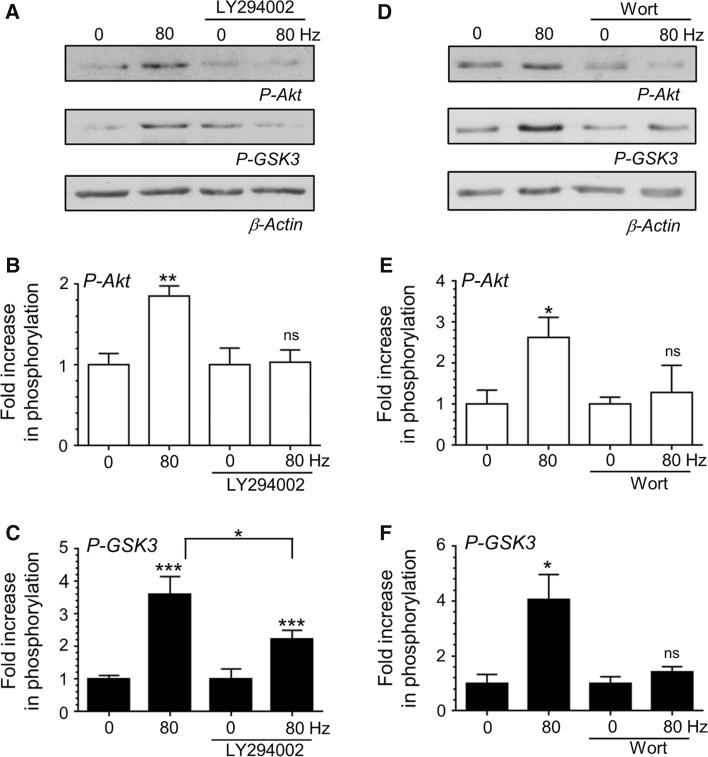Fig. 4.
PI3K activity is essential for activity-dependent Akt/GSK3 phosphorylation. CGNs were removed from culture medium and repolarised in incubation medium for 10 min. Cultures were then incubated with or without incubation medium supplemented with either 10 μM LY294002 or 200 nM wortmannin for 10 min. After this point CGNs were left to rest or challenged with either 800 action potentials (80 Hz). a, d Representative blots are displayed showing either Akt Ser473 phosphorylation (P-Akt), GSK3α/β Ser21/9 phosphorylation (P-GSK3) or β-Actin levels (β-Actin) after action potential stimulation in the presence of either LY294002 (a) or wortmannin (d). b, e The fold increase in phosphorylation of Akt Ser473 (open bars) in the presence of either LY294002 (b) or wortmannin (e). c, f The fold increase in phosphorylation of GSK3α/β Ser21/9 (closed bars) in the presence of either LY294002 (c) or wortmannin (f). In all cases phosphorylation levels were corrected for protein levels using β-Actin and normalisation to the basal controls. All error bars represent ±SEM; LY294002—n = 6 for P-Akt, n = 16 for P-GSK3; wortmannin—n = 4 for P-Akt, n = 6 for P-GSK3 (students t test, ns non-significant, *p < 0.05; **p < 0.01; ***p < 0.001 basal to 80 Hz per condition)

